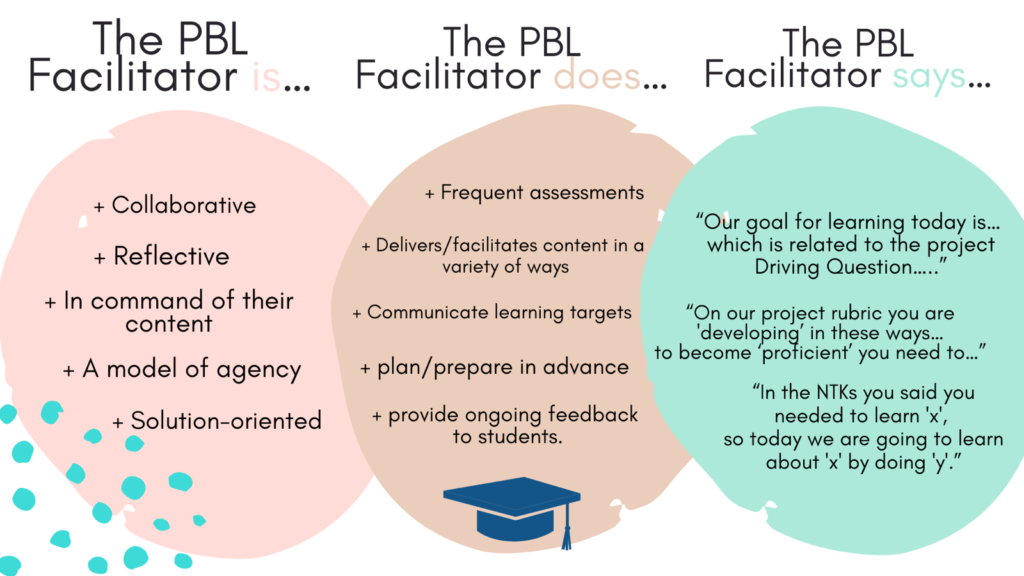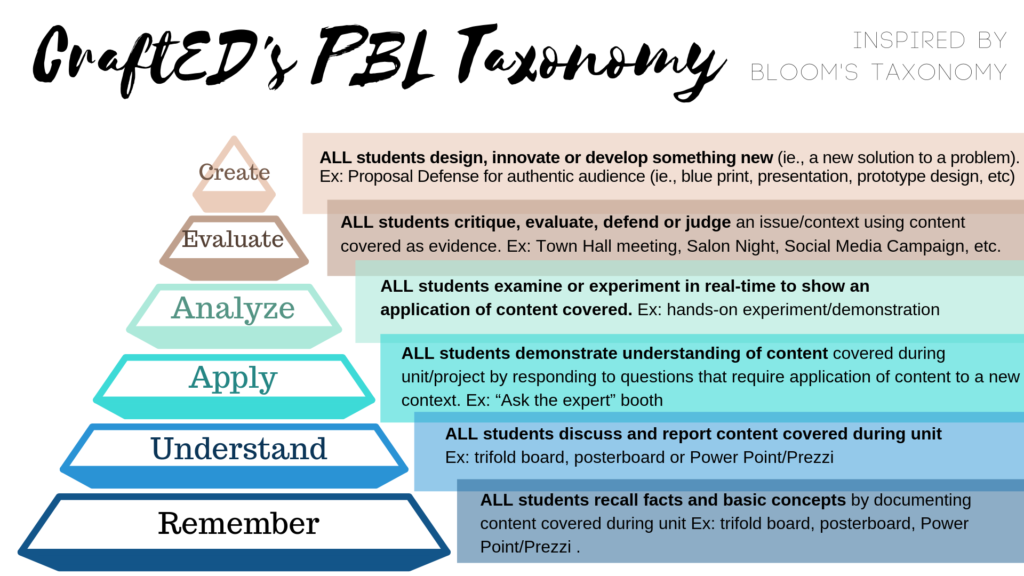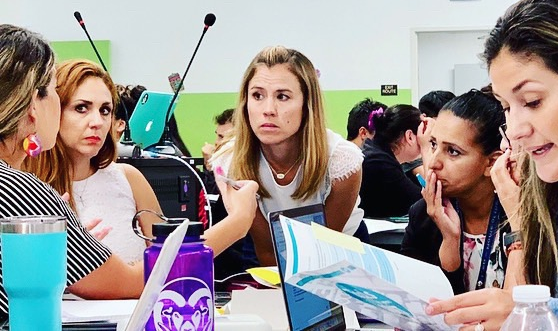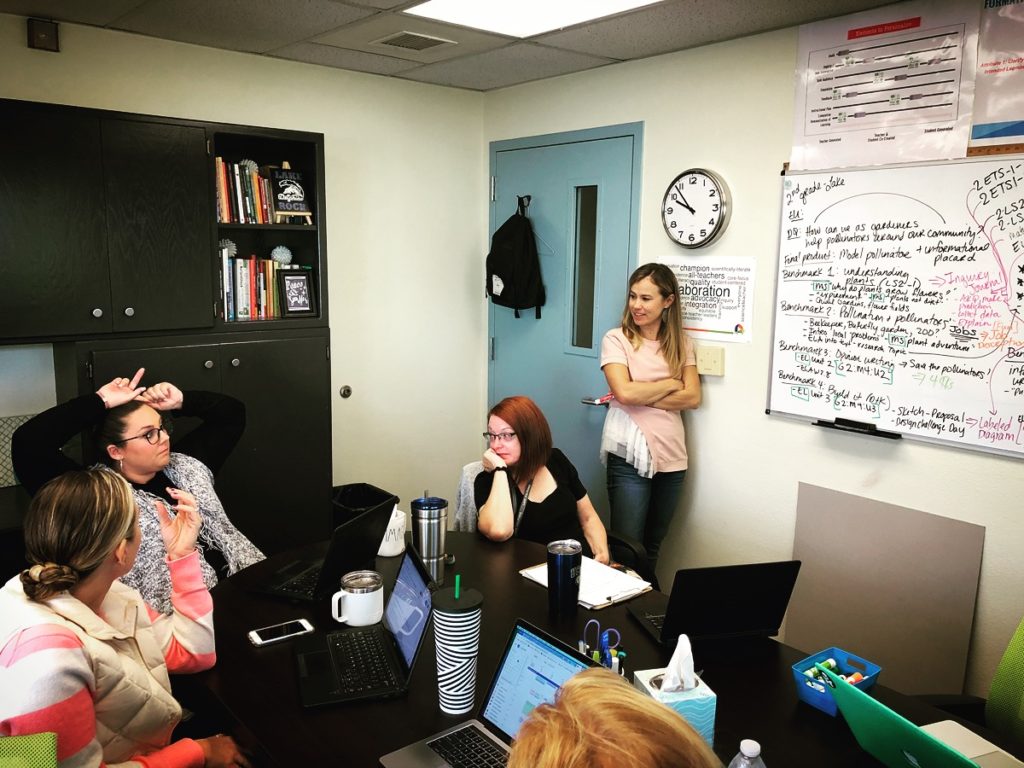What is PBL?
The most common question I am asked in my work is “what exactly is PBL?”. I love this beautiful question because there is no one simple answer. In fact, how each educator defines Project-based learning is unique. For this reason, when I begin my work with a new school I always start out our journey by calibrating on our understanding of what High Quality Project-based learning is-so that we all operate from the same definition; Calibration leads to clarity. To see the process I go through helping schools calibrate you can read more HERE.
What PBL isn’t
As part of this calibration process I typically share a few of my favorite resources with teachers that explain what PBL isn’t. I realize it seems funny to start our journey with negative language-but these two resources {video by Jeff Robin and this article from BIE} really help teachers develop a better understanding of what we are striving for in our work ahead. And I also come out the gate dispelling some pretty important misconceptions that I see in my work, two of which I dedicate significant air time to….
1) PBL is not Powerpoints and Trifold boards;
2) the role of the teacher is not passive. I share the following two graphics and we discuss the implications for our work:


To read more on what PBL isn’t click HERE.
PBL, PRBL and Design Thinking-same thing, right?
Not exactly. My favorite definition of Problem Based Learning (PrBL) that I reference often belongs to that of the brilliant Geoff Krall (AKA Emergent Math). Geoff does a great job of explaining in very succinct terms (with some great visuals!) what the difference between PrBL and PBL is HERE. Typically PrBL seems to resonate with math and world language teachers (and sometimes science teachers), because it is grounded in shorter tasks that allow practice and an emphasis on skills, rather than product. PrBL plays along nicely with PBL because it has a similar open-endedness and authenticity to it that mirrors similar work and classroom cultures where PBL is happening.
I find that teachers and school leaders often use PBL and Design Thinking interchangeably. And while the two play together very nicely, they do have unique frameworks that differentiate the learning process a bit. I explain the difference between these two frameworks in this previous post. What is lovely about Design Thinking and PBL is that they both are vehicles to get to Deeper Learning, which you can learn more about in this video:
So then what is PBL?
In a recent podcast I explain my most succinct definition of Project-Based Learning, while also outlining what I believe to be the non-negotiables of PBL:
- It is grounded in standards
- It incorporates best practices of assessment for learning
- It’s authentic
- It includes 21st century skills
Each of these are pretty “loaded terms” so let me explain a bit more about each:
The Role of Standards
When I work alongside a teacher to plan a project we always begin the process with the standards that teachers are expected to cover. Because standards are the reality that every teacher must exist within, it’s important that we ensure our plans are grounded in these. From here we make connections to authentic issues (more on that below!). Every next step of the process includes us coming back to the content standards-as we build out benchmark, build rubrics, plan for formative assessment and daily lesson plans on the project calendar. More on what I call “the dirty words of PBL”.
Assessment
Best practices of assessment apply to Project-based Learning-specifically, the development of a project rubric, the use of frequent checks for understanding and formal formative assessment lessons. Beyond the ongoing use of the project rubric, the teacher provides ample opportunity for students to self-reflect and receive feedback (from the teacher, peers and experts) , so that the child has opportunity to develop over the course of the project. The easiest way to do this is by providing clear success criteria for students through the use of a student-facing rubric. More on how to build project rubrics, for both teachers and students.
Authenticity in PBL
The term “authenticity” in PBL is a bit of a sliding scale in that how one teacher or students defines authenticity differs from how another might. In simplified terms, authenticity refers to how real and/or relevant a project might be to a given group of students or larger community. Authenticity also includes the role of an audience-or REAL people seeing the work students produce, possibly through and exhibition. And the third layer of “authenticity” is the ideal that through project work students will engage in “real-world work”, or work that will prepare them for a future in the workforce.
21st century skills
Again, definitions of 21st century skills varies-some may call them “interpersonal skills” “workforce readiness skills”, or perhaps “soft skills” . I like to use the language of the following: collaboration, oral communication, creative and critical thinking. Additionally, many schools are continuing to add to their list of 21st century skills to include something along the lines of “growth mindset” or “student agency”. PBL provides wonderful opportunities for students to develop skills that they will need for life.
Want to learn more about what PBL is? In my book “Keep it Real with PBL” I explain more about PBL in the first chapter and I share the following:
While this above list of 4 non-negotiable is not exhaustive, it may begin to provide you with a more vivid picture of what Project Based Learning looks like in action. To deepen this knowledge, it is helpful to understand the many ways in which PBL is different from the traditional approach to teaching and learning:
● The role of the teacher shifts to a facilitator of learning. In PBL, lessons are not traditional in nature. Although a teacher may “stand and deliver” a lecture or a small lesson here and there, they are more commonly orchestrating the execution of their well-thought out plans for student discovery during the actual class time with students.
● Because students are often exploring “real-time” issues, the teacher and student often learn together. In this same vein, textbooks are rare in PBL because the content is quickly outdated for what students are learning in the project.
● Students often display more ownership over their learning, including task management, because of the process of a project.
● Regardless of age or content, students are frequently provided opportunities to develop a variety of 21st century skills, such as collaboration and communication.
● PBL is flexible, meaning the framework allows teachers and students to be responsive to student and community needs and interests.
● Assessment is frequent throughout a project and includes feedback from the teacher mid-project so that the student has opportunities to grow over the course of the project. PBL is action- oriented, meaning students are expected to DO something with their knowledge by applying it or inspiring others to do something.
● PBL pushes beyond rote memorization and requires students to dig deeper in their learning and thinking through application and innovation of new ideas/solutions.
And what’s this new HQpbl?
Leading PBL organizations such as Buck Institute for Education, New Tech Network, High Tech High and Expeditionary Learning have each created their own definition of quality PBL; however, in 2018 a steering committee was created to develop The Framework for High Quality PBL (HQPBL), which attempts to take these many existing definitions of exemplar projects and distill them into basic principles. The HQPBL Framework includes the following
- Intellectual challenge and accomplishment: Students learn deeply, think critically, and strive for excellence.
- Authenticity: Students work on projects that are meaningful and relevant to their culture, their lives, and their future.
- Public Product: Students’ work is publicly displayed, discussed, and critiqued.
- Collaboration: Students collaborate with other students in person or online and/or receive guidance
from adult mentors and experts
- Project Management: Students use a project management process that enables them to proceed effectively from project initiation to completion.
- Reflection: Students reflect on their work and their learning throughout the project.
While this definition of PBL may be helpful for you, you likely are wondering what it looks like at your grade level. I got you covered! Here are some resources (sorted by grade level under “categories”) for viewing exemplars of quality PBL from real teachers I work with in the field.
Are You Ready To Bring PBL To Your School?
Let us help!
Request a proposal




